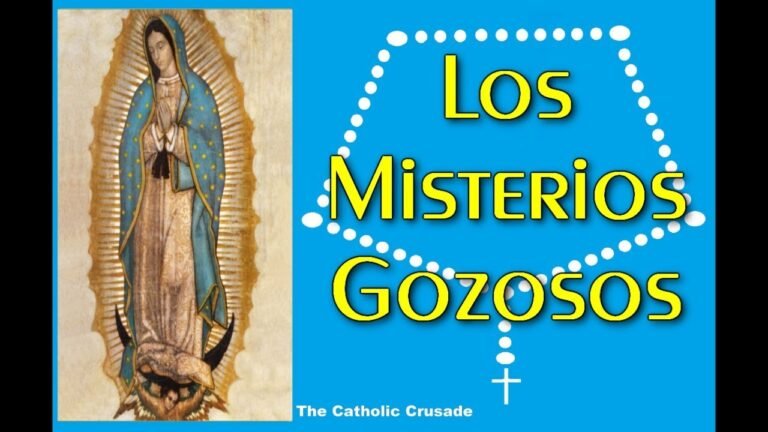Exploring the Valley of Hinnom: Gehenna’s Historical Significance
Nestled just outside the ancient walls of Jerusalem, the Valley of Hinnom, or Gehenna, holds a complex legacy steeped in history and symbolism. Once a site of idol worship and child sacrifice, this ravine has transformed through the ages into a powerful metaphor for judgment and the afterlife in various religious traditions. Today, the Valley of Hinnom invites exploration, offering a poignant reminder of humanity’s capacity for both darkness and redemption, making it a compelling focal point for historians, theologians, and curious travelers alike.
What does the Bible say about the valley of Gehenna?
Gehenna, rooted in the Hebrew term Ge Hinnom, translates to the “valley of Hinnom” and holds a significant place in biblical history. Located to the west and south of Jerusalem, this valley was notorious for its dark past, where ancient practices included the sacrificial burning of children to the Ammonite deity Moloch. This grim association established Gehenna as a symbol of moral decay and divine judgment.
In the New Testament, Gehenna evolves in meaning, representing a place of punishment and torment for the wicked after death. Its depiction serves as a stark warning, emphasizing the consequences of straying from righteousness. Thus, Gehenna transcends its geographical identity, becoming a powerful metaphor for spiritual peril and the importance of ethical living in the eyes of faith.
What is the meaning of Gehenna in the context of Jesus’ teachings?
Gehenna, often interpreted as “hell” in the New Testament, symbolizes the divine justice confronting evil in the world. Its origin stems from the Hebrew phrase “gey’ hinnom,” translating to the “valley of wailing,” which references a real valley located on the southwest side of Jerusalem. This stark imagery evokes a sense of moral reckoning, emphasizing the consequences of wrongdoing and the ultimate resolution of God’s righteousness in a world fraught with sin.
What is the importance of the Valley of Hinnom?
The Valley of Hinnom holds profound significance in biblical narratives, serving as a chilling representation of hell in both Christian and Jewish traditions. Once associated with pagan rituals and child sacrifices, this desolate area near Jerusalem became notorious for its foul stench, reminiscent of a burning sewer. As a result, English translations of the New Testament equate the Valley of Hinnom with the concept of hell, transforming its dark history into a powerful metaphor that evokes the depths of moral decay and divine judgment.
Unearthing the Dark Past of Gehenna
Gehenna, often shrouded in myth and mystery, has long been a subject of fascination for historians and archaeologists alike. This ancient site, steeped in a rich tapestry of history, was once associated with sacrifice and a place of torment. As scholars delve deeper into its origins, they uncover layers of cultural significance that reveal the complex relationship between humanity and the supernatural. The stories etched into the very foundations of Gehenna invite us to explore the moral dilemmas faced by societies that sought to appease their gods through dark rituals.
Recent excavations have shed light on the stark realities of life in and around Gehenna, illuminating the stark contrast between its grim reputation and the daily lives of its inhabitants. Artifacts recovered from the site paint a vivid picture of a community that thrived despite the ominous connotations of their surroundings. Pottery, tools, and remnants of ancient structures suggest a society rich in tradition, resilience, and adaptability. This juxtaposition of daily life against the backdrop of a place long feared as a hellish domain prompts a reevaluation of our understanding of human history and the narratives we construct around it.
As we piece together the fragmented history of Gehenna, it becomes increasingly clear that this site is more than just a relic of a dark past; it serves as a powerful reminder of the complexity of human belief and the lengths to which people will go to confront their fears. By examining the cultural, social, and spiritual dimensions of Gehenna, we not only unearth the shadows of its past but also gain insights into the universal themes of sacrifice, redemption, and the quest for understanding. In doing so, we embrace a narrative that transcends time, inviting us to reflect on our own beliefs and the legacies we leave behind.
The Valley of Hinnom: A Journey Through Time
The Valley of Hinnom, steeped in rich history and myth, invites explorers to uncover its multifaceted past. Once a site of ancient worship associated with fire rituals, it has transformed from a place of sacrifice to a symbol of redemption. Today, the valley stands as a testament to the resilience of culture and belief, offering a poignant reminder of how landscapes evolve alongside human narratives. Visitors can stroll along its paths, absorbing the echoes of centuries, where stories of hope and despair intertwine.
As one traverses the valley, the striking contrast between its haunting history and the serene beauty of its surroundings becomes apparent. Lush greenery now blankets the area, providing a tranquil escape that belies its tumultuous past. This juxtaposition serves as a powerful metaphor for renewal and healing, encouraging a reflective journey through time. The Valley of Hinnom is not merely a geographical location; it is a living canvas where history and nature converge, inviting all who venture here to ponder the complexities of human experience.
From Ancient Ruins to Modern Legends
Across the globe, ancient ruins stand as silent witnesses to the complexities of human civilization. These remnants of once-great empires tell stories of innovation, artistry, and the passage of time. Whether it’s the majestic pyramids of Egypt or the intricate temples of Angkor Wat, each site offers a glimpse into the cultural and spiritual lives of those who came before us. As we explore these historical treasures, we uncover the mysteries of their construction and the societal structures that supported them, allowing us to connect with our shared heritage.
In the shadow of these ancient wonders, modern legends continue to emerge, inspired by the rich tapestry of history. Today, stories of explorers, archaeologists, and preservationists highlight the ongoing quest to understand and protect these sites. As new technologies and methods unveil hidden secrets, they breathe life into the past and spark a deep appreciation for our collective journey. This dynamic interplay between history and modernity not only enriches our understanding of ancient civilizations but also ignites a passion for preserving their legacy for future generations.
Gehenna’s Role in History and Myth
Throughout history, Gehenna has occupied a unique space in both religious and mythological narratives, often symbolizing a place of judgment and purification. Originating from ancient Hebrew texts, Gehenna was initially a physical location near Jerusalem, associated with the Valley of Hinnom, where idolatrous practices, including child sacrifice, were believed to take place. Over time, this valley transformed into a metaphorical landscape, representing the consequences of moral failure and divine retribution in various religious traditions.
In the Christian tradition, Gehenna evolved to signify a hellish realm where souls face eternal punishment. This interpretation served to underline the importance of ethical living and the repercussions of sin, influencing theological discourse throughout the centuries. The vivid imagery of fire and torment associated with Gehenna became a powerful tool for moral instruction, compelling believers to adhere to righteous paths. The concept of divine justice found in Gehenna has resonated through sermons, literature, and art, shaping the collective understanding of morality within the faith.
Meanwhile, in Jewish thought, Gehenna is often viewed not as a permanent hell, but as a temporary state of purification for souls. This perspective emphasizes compassion and the possibility of redemption, providing a more nuanced view of divine judgment. As a result, Gehenna serves as a complex symbol that intersects with themes of justice, mercy, and moral accountability. Its enduring presence in both history and myth continues to provoke reflection on human behavior and the hope for spiritual renewal.
Discovering the Secrets of Hinnom’s Valley
Tucked away in the heart of Jerusalem, Hinnom’s Valley is a place steeped in rich history and captivating legends. Once associated with ancient rituals and dark tales, this valley has transformed into a serene landscape that invites exploration. As you wander through its lush greenery and striking cliffs, the echoes of the past blend with the present, revealing the stories of those who once walked these grounds. The valley is not just a geographical feature; it serves as a reminder of the complex tapestry of cultures and beliefs that have shaped the region over millennia.
Today, Hinnom’s Valley stands as a testament to resilience and renewal. Its scenic trails and tranquil atmosphere attract hikers, history buffs, and nature lovers alike, creating a vibrant community of explorers eager to uncover its hidden treasures. From the remnants of ancient structures to the breathtaking views overlooking the city, each step unveils a new layer of the valley’s secrets. Whether you’re seeking a peaceful escape or a journey through time, Hinnom’s Valley offers an unforgettable experience that resonates with the spirit of discovery.
The Valley of Hinnom, often shrouded in historical mystery and cultural significance, serves as a poignant reminder of the interplay between past and present. Its transformation from a place of ancient rituals to a symbol of moral lessons illustrates the enduring power of narratives in shaping our understanding of good and evil. As we reflect on its legacy, the Valley beckons us to confront our own choices and the paths we forge in our lives, urging a deeper exploration of morality and redemption in our ever-evolving world.







